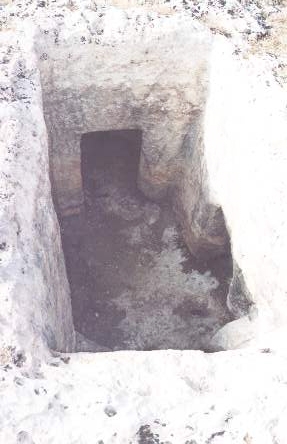

The Phoenicians came to Malta around the eighth century B.C. and settled at some of the strongholds of the previous Bronze Age cultures.
Their main initial settlements were centred around modern Mdina and the Gozo Castello but slowly expanded to a larger number of settlements scattered around the islands. A reconstruction of this expansion is today possible by a re-examination of the phoenician tombs found in the Maltese Islands.
Phoenician tombs are usually of the shaft and chamber type. A shaft, usually square but occasionally round in shape, opens at its base to one or more chambers. When the height of the shaft exceeds 1m a number of steps or footholds are usually found making the descent easier. The entrance to the chamber is often worked to receive a closing slab stone.
The cremated or inhumed remains were usually placed on a raised ledge of rock inside the chamber itself, a measure taken to prevent destruction of the burial in cases of water seepage to the chamber. The tomb was subsequently closed and the shaft filled by small stones.
The photograph above shows one of a number of Phoenician
Tombs that remains at Tal-Wej (also known as Santa Margherita) in Mosta.
A number of steps descend to the bottom of a square shaft, leading to two
side-chambers. As often occurs with phoenician tombs cart-ruts are
found in the vicinity.
GO BACK
Contact author by
E-Mail